We bring you a comprehensive guide to Japanese knives - tools that combine precision, sharpness, craftsmanship, and impeccable design. We will advise you on how to find your way around them, how to choose the right one and how to care for it so that it maintains its quality for as long as possible.
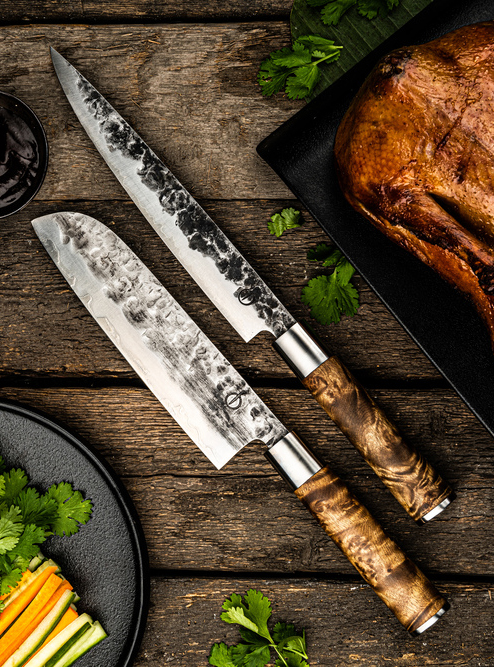
Types of Japanese knives
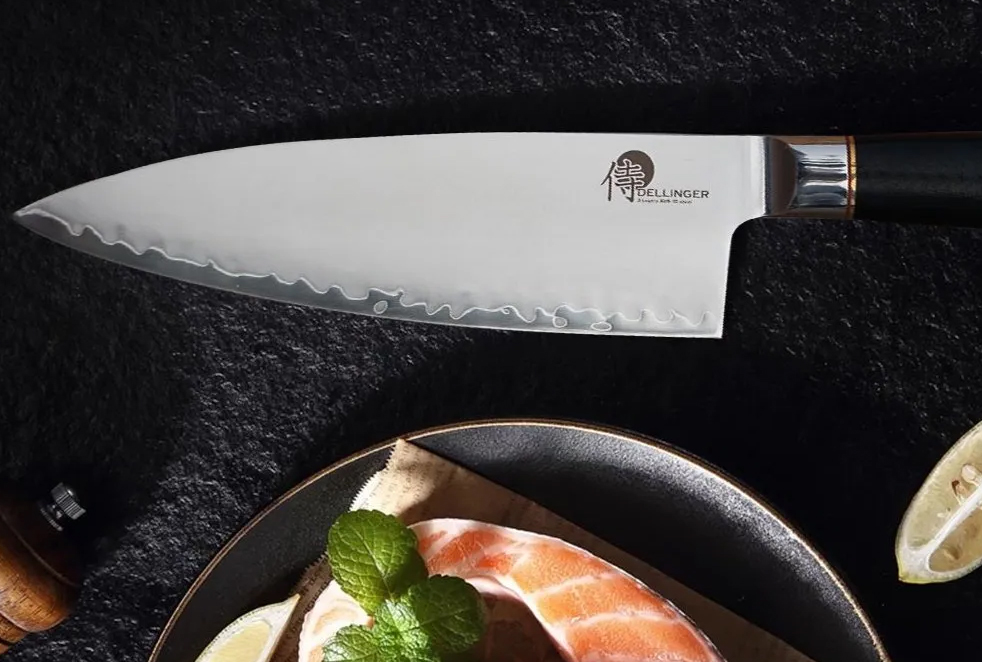
The Gyuto is a versatile chef's knife that resembles a European chef's knife, but is lighter and sharper, allowing for finer and more precise cutting.
Thanks to its thin blade with a slight curve, it is great for very fine and precise cuts. It is particularly suited for cutting meat, fish and less tough vegetables, but can also handle more delicate jobs such as filleting or chopping herbs.
Gyuto knives
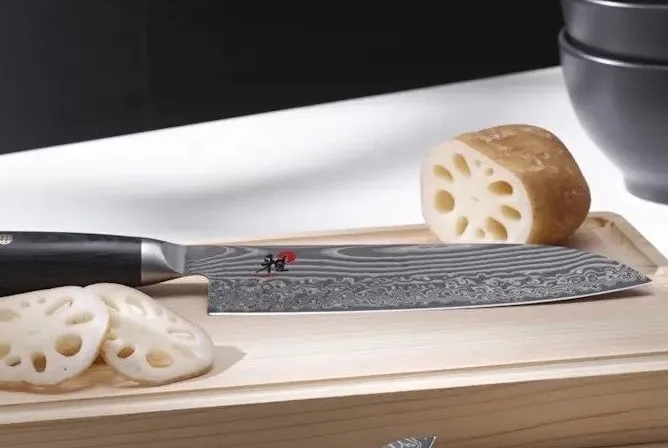
Santoku, which translates to "three virtues" or "three skills", is a versatile tool, ideal for the novice cook or for those who can get by with one large knife in the kitchen.
It has a wide, almost flat blade with a straight or slightly curved edge, thanks to which it allows slicing, chopping and slicing of various types of raw materials (except perhaps bones - for which the European is much better suited).chef's knife).
Another advantage of the santoku knife is the exceptional width of the blade, which can be used for carrying chopped ingredients.
Santoku knives

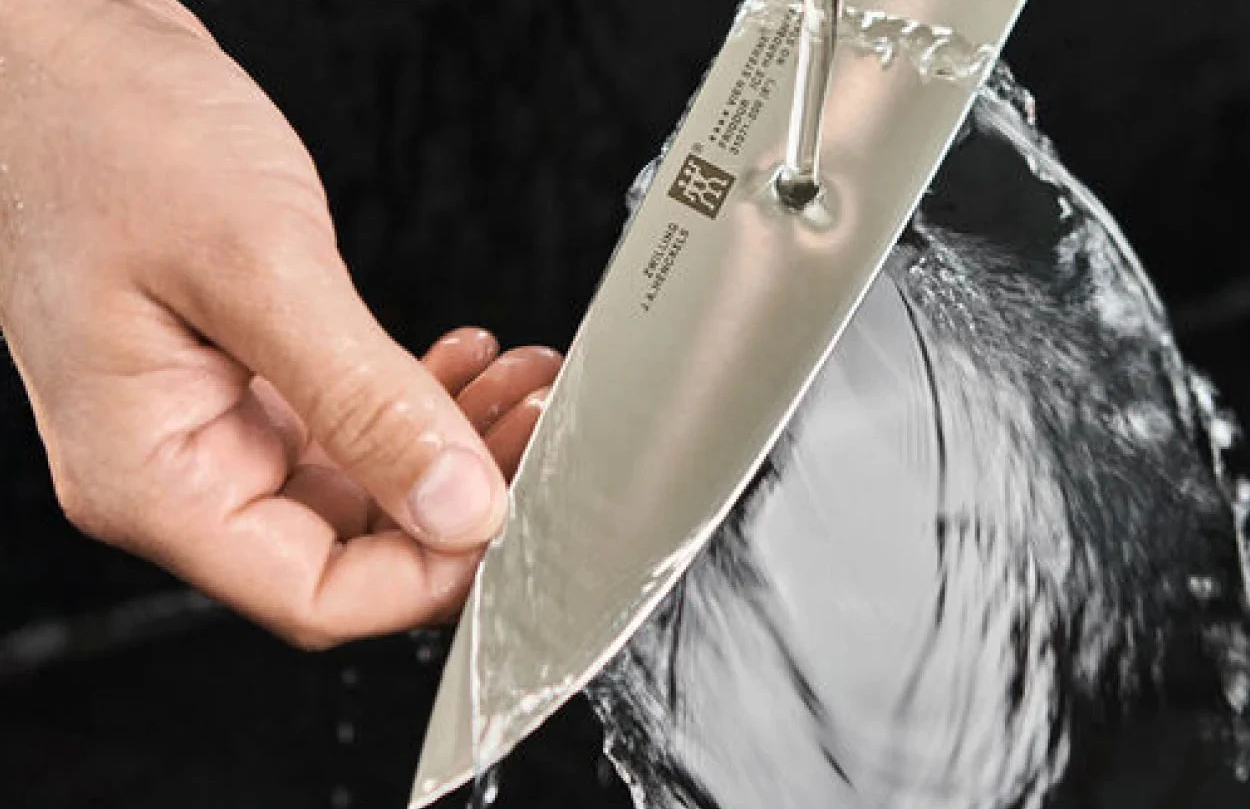
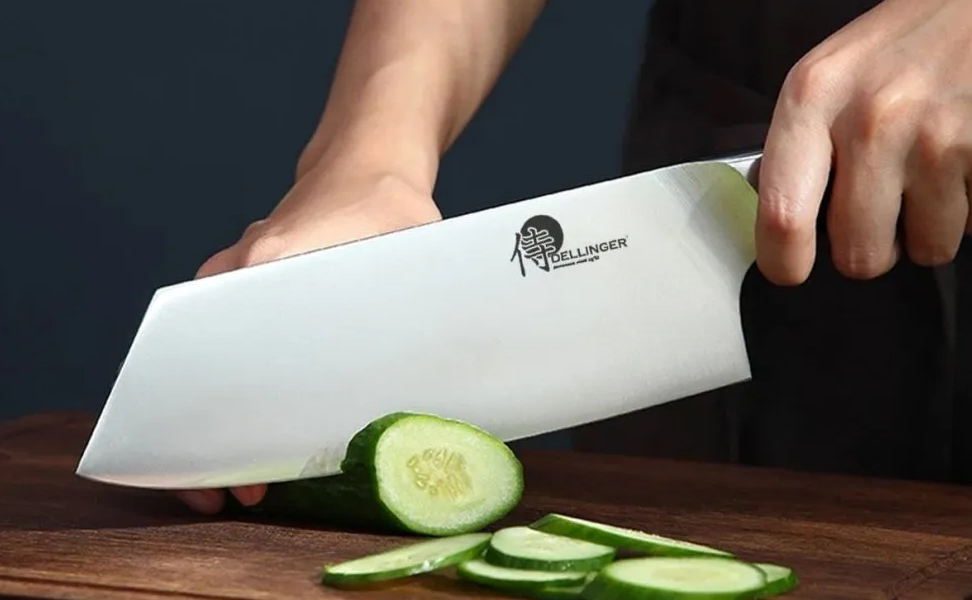
Nakiri is a knife specially developed for cutting vegetables. Thanks to its rectangular blade with a straight bottom edge, it ensures that the entire blade touches the cutting board when slicing, eliminating incomplete cuts.
The sturdy blade also makes it easy to transfer chopped vegetables to a pan or bowl. The higher weight of the nakiri knives makes it easier to cut hard vegetables.
Nakiri knives
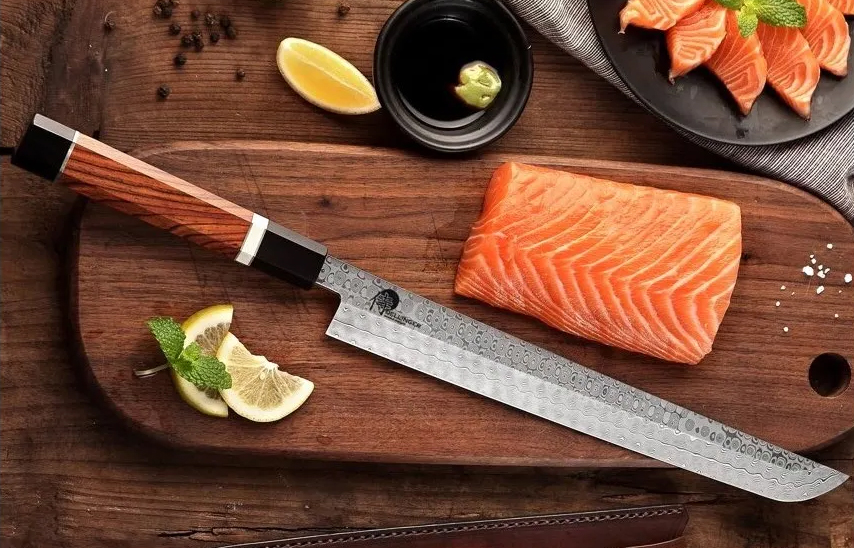
The Yanagiba is a symbol of Japanese culinary tradition, as it is a knife specifically designed for sushi and sashimi preparation, or for slicing fish into thin slices without disturbing the texture of the meat.
It allows smooth cuts in one stroke, thanks to its long, narrow blade with a single-edged edge.
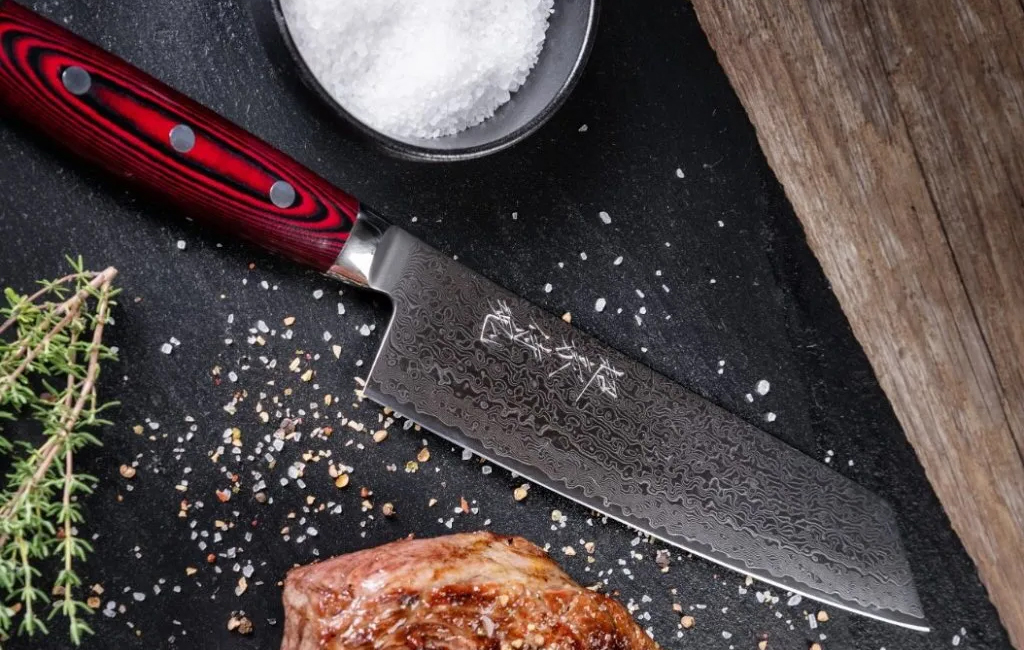
Kiritsuke is a knife with a long, narrow blade and a characteristic bevelled tip that resembles a dagger. This shape is ideal for fine and precise slicing as well as for more complex cooking techniques.
The Kiritsuke is considered a knife for more experienced cooks, as its operation requires a certain degree of skill. However, it can be used for cutting fish and meat as well as for preparing vegetables, making it a very versatile tool in the kitchen.
Kiritsuke knives
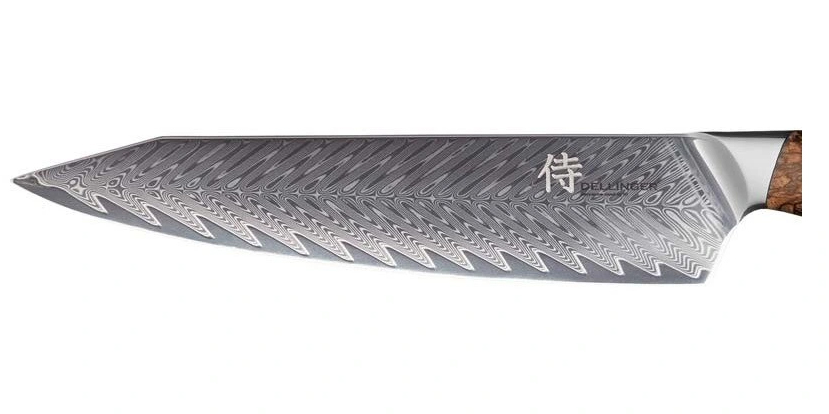 Japanese knife blades
Japanese knife blades
Different types of steel are used to make the blades of Japanese knives:
- The best of these is damascus steel. It is a blend of low and high carbon steel that is extremely strong, so it can stay sharp for a long time, at the same time it can resist corrosion and has an exceptional design.
- The also stands out for its sharpness and strength.carbon steelHowever, it is more susceptible to corrosion, so regular maintenance must be considered.
- The main advantage of Japanese knives from stainless steel is their affordability and also the fact that they do not rust. However, the stainless steel blade is not as strong, so it dulls faster and needs to be sharpened more often.
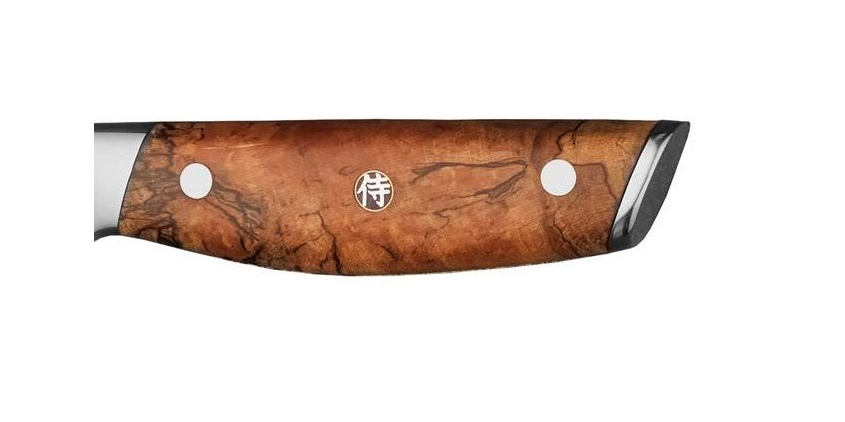 Japanese knife handles
Japanese knife handles
A typical Japanese knife has a wooden handle. Nowadays, however, knives with metal or composite handles are also available. Each material has its pros and cons:
- Wood is stylish and pleasant to the touch, but over the years it can show signs of wear and tear and also needs care to avoid drying out.
- Metal looks tasteful and professional, but can be slippery, especially if it gets wet or dirty.
- Composite is practical, has a long life, but usually does not bring so much elegance to the kitchen.
.jpg)
How often to sharpen a Japanese knife
The frequency of sharpening depends on how often you use the knives:- If you work with them daily, sharpen them once every 1-2 weeks.
- If you only use them a few times a week or even less, sharpening them once a month will suffice.
- In professional use, sharpening at least every other day is advisable.
- Remember that at least once a year it is necessary to have your knives professionally sharpened.
How to clean Japanese knives
Avoid washing in the dishwasher. Hot water and solvents in tablets can gradually erode the structure of the blade and handle, causing premature wear. Therefore, after use, wash the knife with a soft sponge and mild detergent and then dry the knife thoroughly.with a soft cloth.
Where to store Japanese knives
Store knives in blocks, racks, on rails or in protective sleeves. If they are stored loose in kitchen drawers with other tools, they can be damaged and dulled.

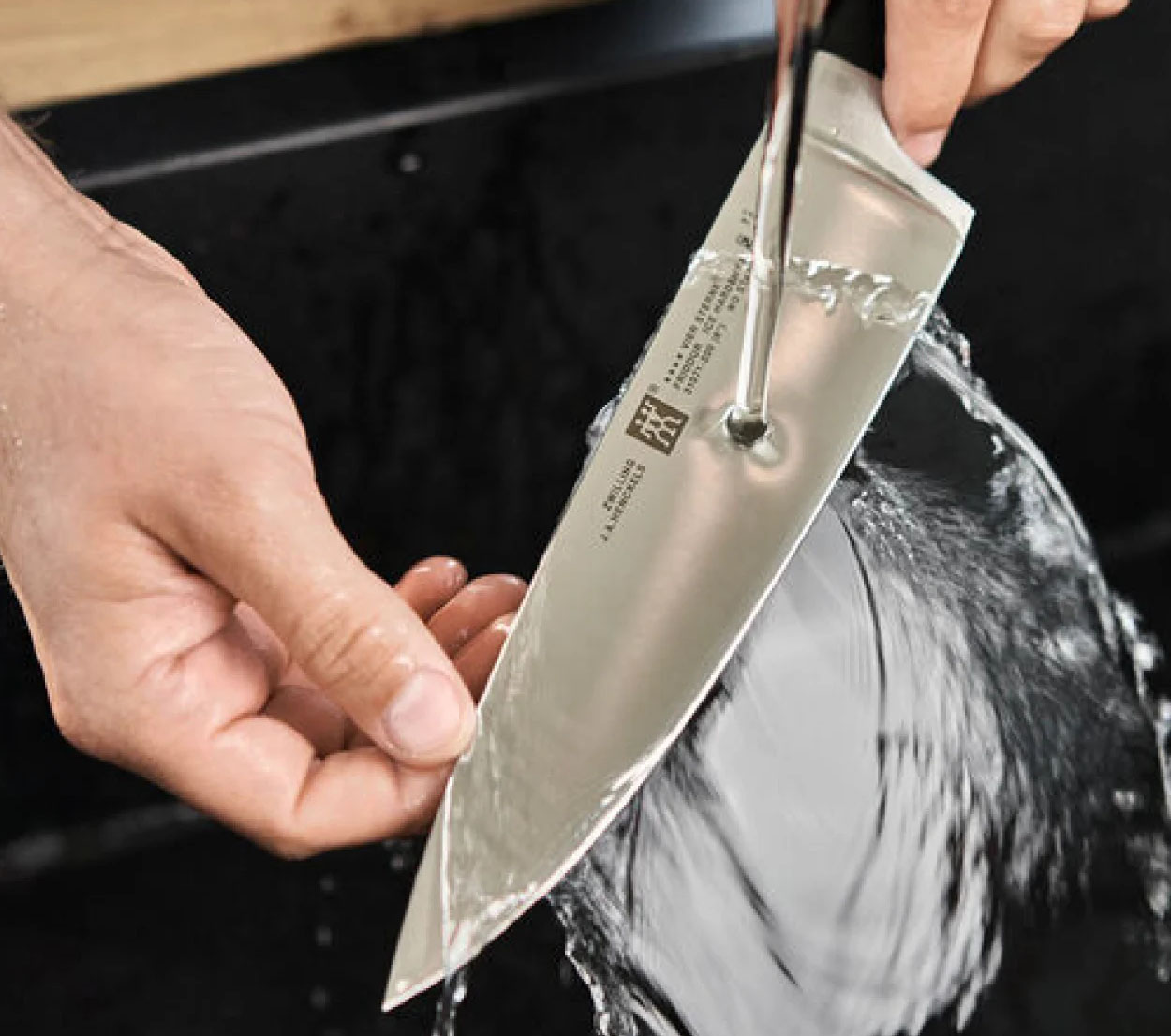
The best Japanese knives according to customer reviews
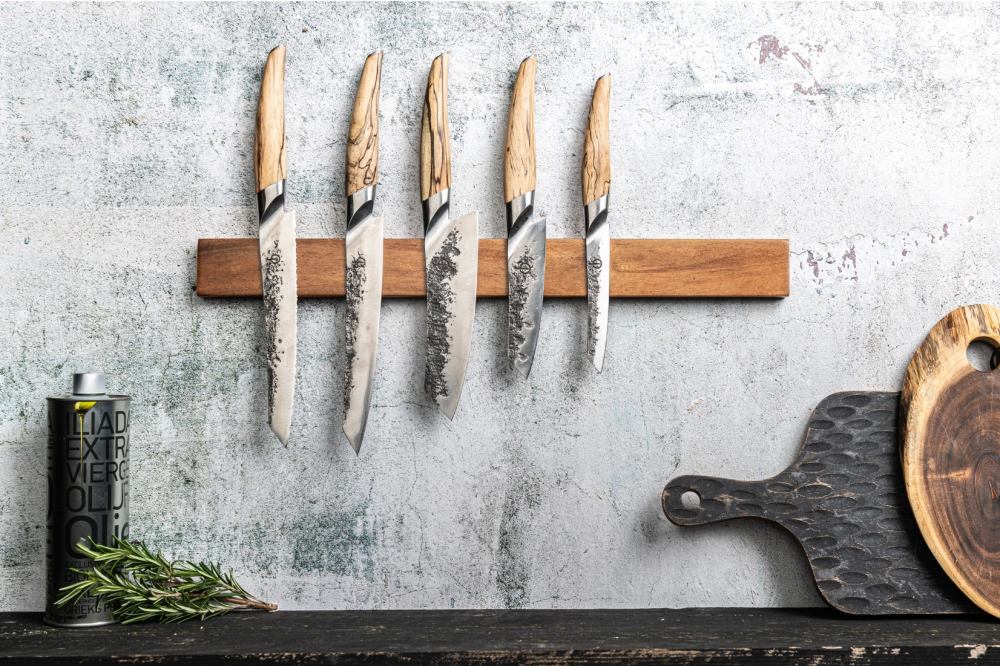
Japanese knife brands
One of the most desirable manufacturers of Japanese knives is MIYABI. A brand that combines tradition with modern techniques and manages to produce knives of the highest quality. It follows the craftsmanship of the city of Seki, which is famous for the production of samurai swords. It uses the highest quality damascus and carbon steel for its knives. In addition, each knife undergoes a meticulous process of hand forging and sharpening that involves up to 100 steps and usually takes several weeks. MIYABI knives are not only tools for precise and efficient food preparation, but also works of art that reflect Japanese culture and tradition.
Other popular manufacturers include Dellinger,Forged or Yaxell.
